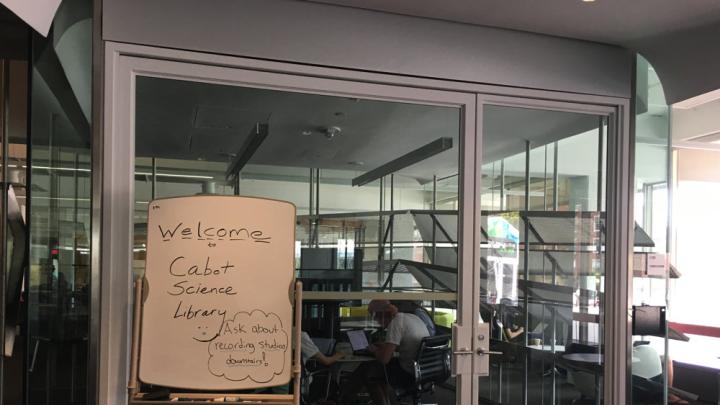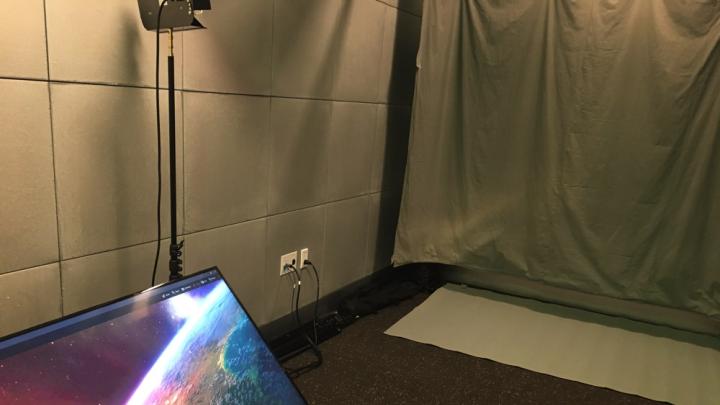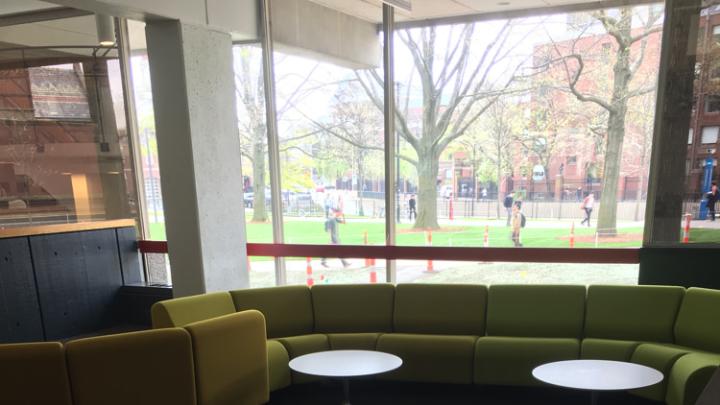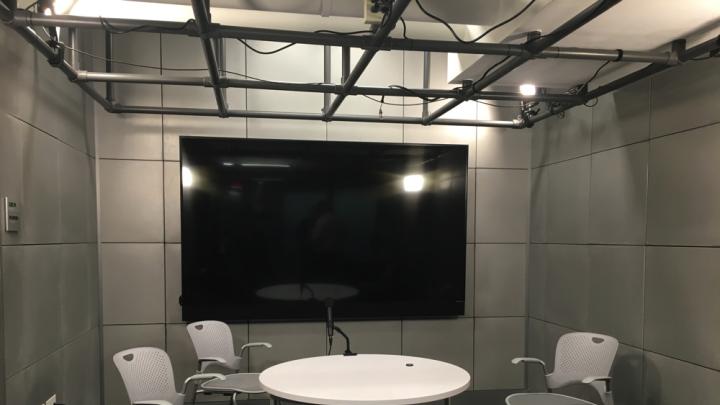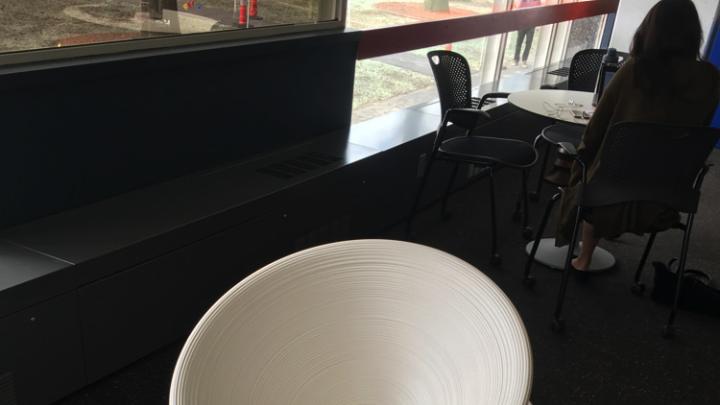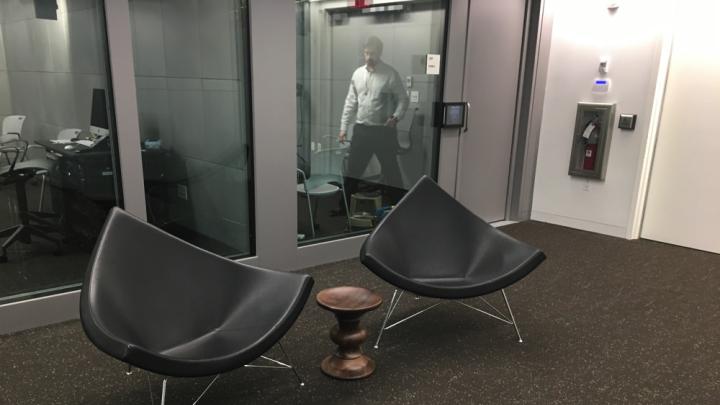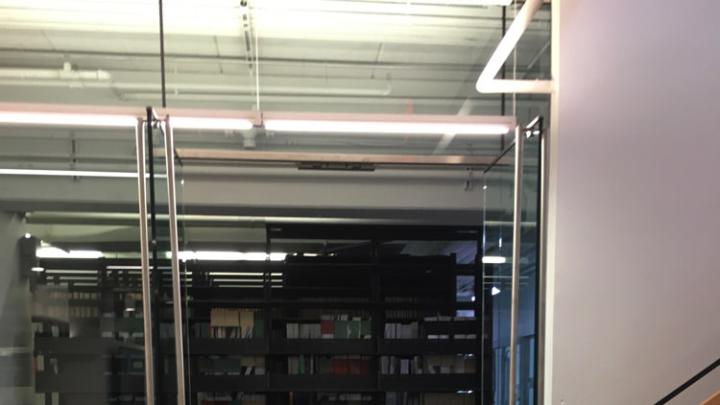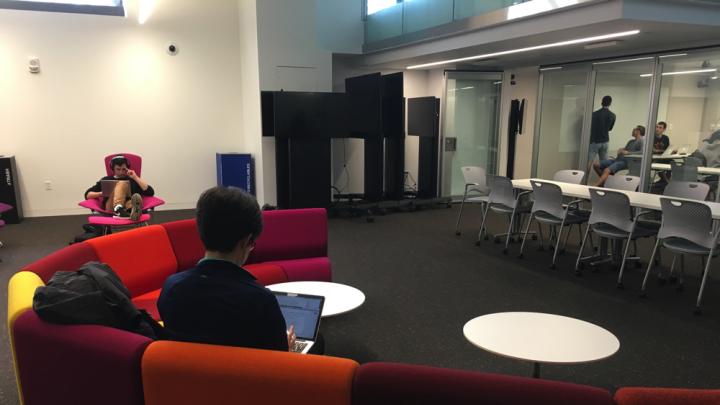Prior to its redesign, the Cabot Science Library had opaque windows, uninviting first and second floors, and a lack of room for students needing to spend any meaningful amount of time there. Last month, the library re-opened with an entirely new design and a focus on providing students with spaces in which to socialize, study, and organize meetings. “I remember being in Cabot when the computer was a big machine and you went and you filed your program and it came out on a piece of paper,” says Penny Pritzker ’81, a key donor for the redesign project, including the nearby common spaces (the eponymous Pritzker Commons). “Those library spaces weren’t very hospitable to what is true, which is that students work at many hours of the day, not just from nine to five. There was no place to eat, no place to convene.” The addition of Clover Food Lab to the space, as well as a variety of chairs, tables, nooks, and booths was designed to make the Science Center less of a place to stop by in transit on the way to a class or a meeting, and more of a destination in which to hold events and collaborate on group work.
Almost everything in the updated space is movable; the tables and chairs are all meant to be taken apart and re-assembled, and monitors on wheels stand in almost every corner, waiting to be turned on. Students may not have yet grown comfortable with taking control of the malleability of the furniture, but opportunities to tailor the space to meet individual needs are plentiful. Pritzker says that she received feedback from her daughter, Rose Pritzker Traubert ’16, and her friends about the absence of a space in the north part of campus to convene. She took that concern to dean of the Faculty of Arts and Sciences Michael D. Smith, who immediately understood the benefit of turning Cabot into more than just a traditional science library.
Although the interior of the building now more closely resembles a tech start-up than an actual library, Pritzker is proud that the renovations don’t detract from the legacy architecture and beauty of Harvard’s campus. “I think the Harvard community has embraced the space so quickly because it meets the needs of the students and the faculty: their work needs, their social needs, their nourishment needs, and their convening needs. It serves many different functions.”
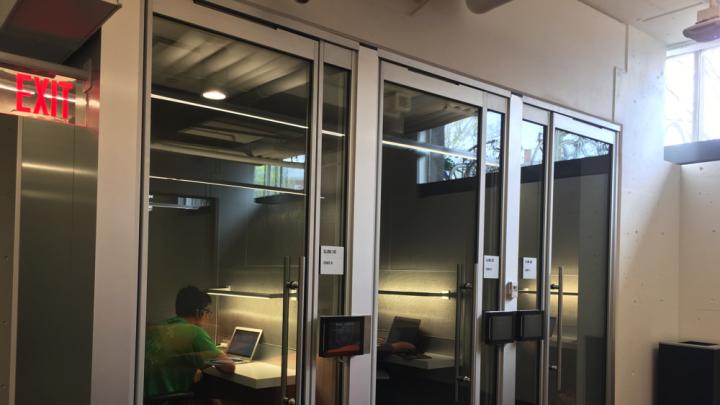
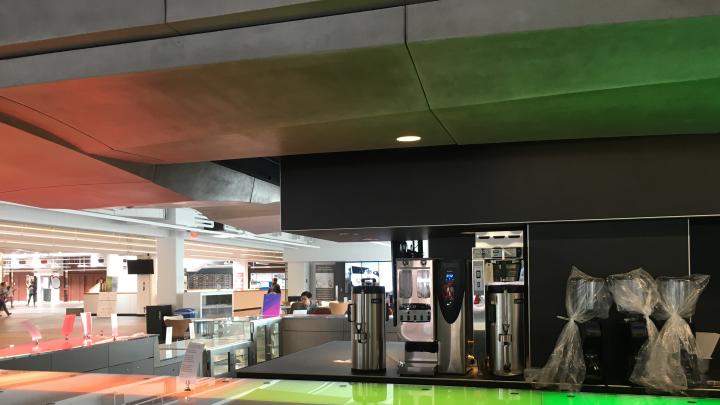
![[Click photo to see more images] Students study by Clover Food Lab](/sites/default/files/styles/topic_teaser_mobile_d7/public/img/article/0517/img_1842sm.jpg?itok=O0JqbJvX)

